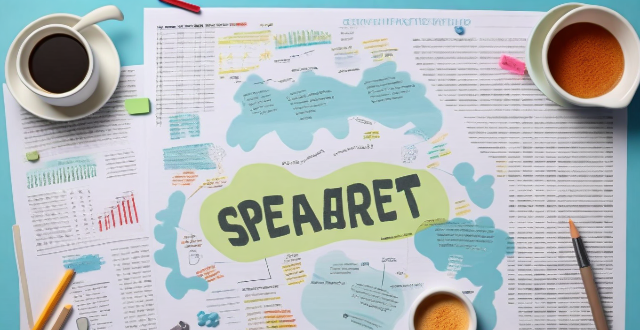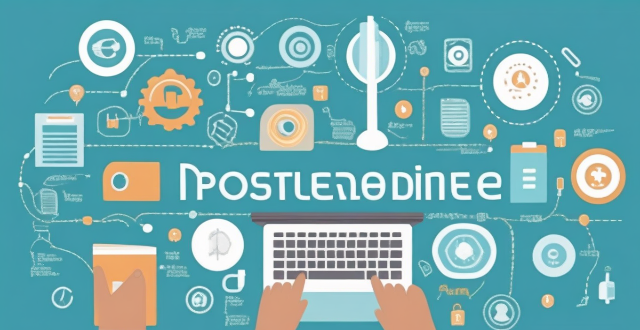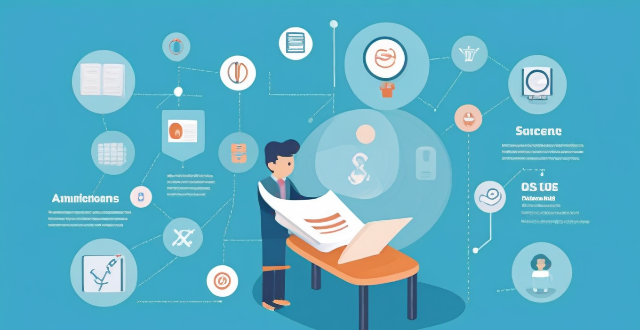Gym Budget

Can you recommend any budget-friendly gym equipment ?
The text offers recommendations for budget-friendly gym equipment, including multi-functional fitness equipment like adjustable dumbbells, resistance bands, and a jump rope; bodyweight training essentials such as a pull-up bar, push-up stands, and an ab wheel; and additional accessories like a gym mat, foam roller, and kettlebell. These affordable items can help achieve fitness goals without the need for expensive gear or a gym membership.

What sports equipment do I need for a complete home gym setup ?
Setting up a home gym requires careful consideration of various types of sports equipment to ensure a comprehensive workout routine. Here's a summary of the key components: 1. **Cardiovascular Equipment**: Includes treadmills, ellipticals, stationary bikes, and rowing machines for endurance and cardio training. 2. **Strength Training Equipment**: Dumbbells, weight plates, barbells, kettlebells, and resistance bands are essential for building muscle mass and overall strength. 3. **Bodyweight Training**: Pull-up bars, parallette bars, and wall-mounted rings facilitate calisthenics exercises using one's body weight as resistance. 4. **Stretching and Recovery**: Foam rollers and yoga mats aid in muscle recovery, flexibility improvement, and floor exercises. 5. **Additional Items**: An exercise bench, jump rope, and a timer or app can complement your workouts with versatility and intensity tracking. Space availability and budget should guide your choices, allowing you to start with basics and expand gradually. With the right selection of equipment, you can create a well-rounded home gym that supports all aspects of fitness and wellness.

Is it necessary to join a gym or can I do a home workout routine as a woman ?
The decision to join a gym or opt for a home workout routine as a woman depends on personal preferences, fitness goals, time availability, and budget. Advantages of joining a gym include access to equipment, motivation and accountability, and professional guidance. Advantages of home workouts include convenience, cost-effectiveness, and flexibility. Considerations for women include fitness goals, time availability, budget, and personal preferences. Both options can be effective in maintaining fitness levels, so it ultimately comes down to individual circumstances and preferences.

How can I create a effective home gym on a budget ?
Creating a home gym on a budget requires identifying fitness goals, choosing multipurpose equipment, investing in quality mats, incorporating bodyweight exercises, utilizing online resources, and establishing a consistent routine.

What are some tips for staying motivated during a gym workout ?
Staying motivated during a gym workout can be challenging, but crucial for maintaining a consistent exercise routine. Tips include setting clear goals, creating an energetic playlist, finding a workout buddy, mixing up your routine, tracking progress, rewarding yourself, visualizing success, embracing challenges, getting adequate rest, and focusing on how exercise makes you feel. By implementing these strategies, you can make the most out of your gym workouts and stay consistent in your fitness journey.

How long should my gym sessions be to maximize results ?
Maximizing Gym Sessions for Optimal Results: The duration of your gym sessions can significantly impact your results. To maximize your outcomes, consider factors such as your goals, fitness level, and schedule. Recommended durations vary based on goals: muscle building requires 60-90 minutes, weight loss benefits from 30-45 minutes of HIIT or circuit training, and cardiovascular health improves with 30-60 minutes of moderate-intensity workouts. Intensity matters, with shorter high-intensity workouts being more effective for fat loss and longer moderate-intensity sessions building endurance. Listen to your body and adjust accordingly, allowing for adequate rest and recovery days to prevent injury and promote muscle growth.

Is it necessary for employers to provide fitness facilities or subsidize gym memberships ?
As the importance of physical health and wellness becomes increasingly recognized, many employees are looking for ways to maintain an active lifestyle. One option that has gained traction in recent years is for employers to provide fitness facilities or subsidize gym memberships as part of their employee benefits package. Providing fitness facilities or subsidizing gym memberships can help employees stay healthy and energized, which can lead to increased productivity at work. Studies have shown that regular exercise can reduce fatigue, improve mood, and enhance cognitive function, all of which can contribute to better job performance. Offering fitness perks can also be a powerful tool for attracting and retaining top talent. In today's competitive job market, companies need to offer unique benefits that set them apart from their competitors. By providing access to fitness facilities or subsidizing gym memberships, employers can demonstrate a commitment to their employees' well-being and create a positive work culture that fosters loyalty and engagement. While the initial investment in setting up a fitness facility or subsidizing gym memberships may be significant, there are potential long-term cost savings to consider. By promoting a healthy lifestyle among employees, employers may be able to reduce healthcare costs associated with chronic diseases related to poor diet and lack of exercise. Additionally, reducing absenteeism due to illness or injury can also save money in the long run. However, one of the main concerns about providing fitness facilities or subsidizing gym memberships is the cost. Depending on the size of the company and the scope of the program, implementing such benefits can be expensive. Employers must weigh the potential benefits against the financial implications before making any decisions. Another challenge is ensuring that the program is accessible and convenient for all employees. If the company is located in a remote area or has multiple locations, it may not be feasible to provide on-site fitness facilities or subsidize gym memberships at nearby clubs. Additionally, some employees may prefer working out at home or participating in outdoor activities rather than using a gym. Employers must also consider legal issues when implementing fitness programs. For example, they should ensure that any fitness facilities comply with local building codes and safety regulations. They should also be aware of potential liability issues if employees sustain injuries while participating in company-sponsored fitness activities. In conclusion, while it is not absolutely necessary for employers to provide fitness facilities or subsidize gym memberships, doing so can offer several benefits including increased productivity, improved retention and recruitment efforts, and potential cost savings over time. However, employers must carefully consider the financial implications, logistical challenges, and legal considerations before implementing such programs. Ultimately, whether or not to offer these benefits will depend on each individual company's unique circumstances and priorities.

Is it necessary to have a gym membership to experience mental rejuvenation through exercise ?
Exercise is beneficial for mental health, but a gym membership isn't necessary. Benefits include reduced stress and anxiety, improved self-esteem, better sleep quality, and enhanced cognitive function. Gym pros: diverse equipment, group classes, personal training, community support. Cons: cost, time constraints, crowdedness. Alternatives: home workouts, outdoor activities, sports clubs, dance classes. The key is finding an enjoyable activity that can be consistently incorporated into one's lifestyle.

What are some effective cardio exercises that can be done at the gym ?
Effective Cardio Exercises at the Gym Cardio exercises are an essential part of any fitness routine. They help improve cardiovascular health, burn calories, and increase endurance. Here are some effective cardio exercises that can be done at the gym: 1\. Treadmill Workouts 2\. Elliptical Machines 3\. Stationary Bikes 4\. Rowing Machines 5\. Step Mills 6\. VersaClimber/Vertical Climber 7\. Group Fitness Classes 8\. Other Machines

What are some tips for managing an education budget effectively ?
The article provides effective tips for managing an education budget, including creating a budget plan, tracking spending, looking for scholarships and grants, considering part-time work or freelancing, reducing unnecessary expenses, and planning ahead for future expenses. It emphasizes the importance of staying organized, prioritizing expenses, and seeking out funding opportunities to ensure that students have the resources they need to succeed in their academic pursuits.

How can I create an effective education budget plan ?
Creating an effective education budget plan involves identifying educational goals, determining expenses, evaluating financial resources, creating a budget timeline, tracking spending, and reviewing and revising the budget regularly. This process helps ensure that you have the necessary funds to cover your educational expenses while achieving your academic objectives responsibly.

What are the best practices for setting a personal budget ?
The article outlines best practices for setting a personal budget to achieve financial stability and success. It suggests determining income, listing expenses, setting financial goals, creating a budget plan, tracking spending, and adjusting the budget as needed.

How do I plan a backpacking trip on a budget ?
This guide outlines how to plan a budget-friendly backpacking trip by defining a realistic budget, choosing an affordable destination, traveling during off-peak season, opting for budget accommodations, cooking own meals, using public transport, engaging in free activities, packing light, staying connected affordably, and not skimping on trip insurance. It emphasizes the importance of research, flexibility, and openness to new experiences for a memorable adventure without financial strain.

What are the best budget-friendly family meals ?
When it comes to feeding a family on a budget, there are plenty of delicious and nutritious meal options that won't break the bank. Here are some of the best budget-friendly family meals: 1. Spaghetti with Meat Sauce 2. Chicken Stir Fry 3. Baked Potatoes with Toppings 4. Tacos 5. Roasted Vegetables and Quinoa Salad

How do I create a budget plan for my small business ?
This guide provides a step-by-step approach to creating a budget plan for small businesses, emphasizing the importance of defining business goals, analyzing financial data, categorizing expenses, setting realistic revenue projections, determining break-even points, and allocating funds accordingly. It also stresses the need for regular monitoring and adjustments to the budget, along with tips for effective budget management such as staying flexible, using budgeting tools, seeking professional advice, communicating with the team, and reviewing past budgets.

What are the key factors to consider when planning an education budget ?
The text provides a comprehensive guide on the key factors to consider when planning an education budget. These factors include student population, curriculum and program offerings, faculty and staff salaries, infrastructure and maintenance costs, technology and digital learning tools, professional development opportunities, student support services, community partnerships and collaborations, and contingency funding. By considering these factors, one can create a budget that meets the educational needs of students while staying within financial constraints.

How can I track and monitor my education budget plan effectively ?
Effectively tracking and monitoring your education budget plan is crucial for managing finances and achieving academic goals without unnecessary debt. Strategies include setting clear goals, creating a comprehensive budget, using financial tools, regularly tracking expenses, making adjustments as needed, and seeking professional advice when necessary. Following these steps can help you stay on track financially while pursuing your academic objectives.

How can I find the best holiday gifts within a specific budget ?
Finding the best holiday gifts within a specific budget can be challenging, but with careful planning and research, it is possible. Set your budget, make a list of people to buy for, research gift ideas, compare prices, consider alternatives to traditional gifts, start early, and use credit card rewards to find great gifts that won't break the bank.

Is there a specific formula for allocating funds in a startup budget ?
This guide provides a structured approach for startup budget allocation, emphasizing the importance of understanding the basic components of a budget and key areas of investment such as product development, marketing and sales, operational expenses, and contingency funds. It suggests following the 50/30/20 rule as a starting point and emphasizes the need for regular reviews and adaptability to ensure scalability and growth.

In what situations is it important to involve a financial advisor in budget planning ?
Involving a financial advisor in budget planning is crucial during significant life events, large investments, debt management, retirement planning, and tax planning. A professional can help develop a budget that meets short-term needs while achieving long-term goals.

How do I manage unexpected expenses within my budget ?
Unexpected expenses can be managed within your budget by establishing an emergency fund, reviewing and adjusting your budget, prioritizing expenses, considering short-term solutions, negotiating and seeking assistance, avoiding taking on debt, planning for future expenses, and staying vigilant with your budget. Start small with saving for emergencies, identify non-essential expenses to cut back on, prioritize essential expenses, consider side hustles or selling unused items for extra income, negotiate bills and seek assistance when needed, avoid high-interest loans, learn from past experiences to anticipate future expenses, and regularly review and adjust your budget as circumstances change.

How do I create a budget for a special project at work ?
Creating a budget for a special project at work requires careful planning and consideration of various factors. Here are some steps to help you create an effective budget: 1. Define the project scope, including goals, objectives, and deliverables. 2. Identify all resources needed, such as personnel, equipment, software, and materials. 3. Estimate costs associated with each resource, including direct and indirect costs. 4. Determine funding sources and how much funding is available. 5. Create a timeline with key milestones and deadlines. 6. Assign responsibilities for managing different aspects of the budget. 7. Regularly monitor progress and adjust the budget as needed.

How can I stick to my budget without feeling deprived ?
Sticking to a budget is easier when you don't feel deprived. Here's how to do it: 1. **Set Realistic Goals**: Break down your financial goals into smaller, more manageable ones and make them specific and measurable. 2. **Prioritize Your Expenses**: Categorize your expenses into essential and non-essential, and differentiate between needs and wants. 3. **Find Alternatives**: Consider DIY projects and buying used items instead of new ones to save money. 4. **Track Your Spending**: Use budgeting apps or visual aids to monitor your expenses and progress toward your financial goals. 5. **Reward Yourself**: Allow yourself small treats for sticking to your budget and plan larger rewards for achieving long-term financial goals. 6. **Stay Motivated**: Keep reminders of your financial goals visible and share your goals with friends or family members who can provide support.

What are some common pitfalls when creating a household budget ?
When creating a household budget, people often fall intoWhen creating a household budget, people often fall into can lead to financial difficulties and people often fall into common pitfalls that can lead to financial difficulties and make it harder to achieve financial goals. These pitfalls include not tracking expenses, underestimating expenses, ignoring debt repayment, failing to plan for emergencies, and overspending on non-essentials. To avoid these mistakes, people should keep track of all expenses, be realistic when estimating expenses, prioritize paying off high-interest debt, set aside money for emergencies, and limit discretionary spending. By avoiding these pitfalls, people can create a budget that works for them and helps them achieve their financial goals.

How can I ensure that my education budget plan is sustainable in the long term ?
Proper planning and management of an education budget are crucial for ensuring its long-term sustainability. Here's how you can achieve that: * Establish clear goals that are specific, measurable, achievable, relevant, and time-bound (SMART). * Conduct a thorough analysis of your current financial situation, projected costs, and sources of funding. * Create a comprehensive plan that includes budget allocation, revenue streams, and expense tracking. * Review and adjust the plan periodically to adapt to changes in personal circumstances, market conditions, or educational requirements. * Seek professional advice from financial advisors and education counselors to ensure the best outcomes.

How can I avoid impulse buying and stick to my budget ?
Impulse buying is a common problem for many people, but there are strategies you can use to avoid it and stick to your budget. Creating a budget, setting financial goals, using cash instead of credit cards, avoiding temptation, and practicing mindful spending are all effective ways to control your spending and achieve your financial objectives. By implementing these strategies, you can take control of your finances and make progress towards your long-term goals.

What are some common mistakes people make when planning an education budget ?
Planning an education budget is crucial for achieving academic and professional goals, but common mistakes can cause financial difficulties. Mistakes include underestimating costs by failing to account for all expenses or ignoring hidden fees, overlooking future opportunities like extracurricular activities or networking events, misjudging financial aid and scholarships, disregarding potential income sources such as part-time work or skill-based services, and inadequate contingency planning without an emergency fund or considering changes in personal circumstances. Avoiding these pitfalls can lead to a more realistic and effective education budget that supports your academic journey without unnecessary stress or debt.

What are some resources available to help me with education budget planning ?
Education budget planning is crucial for managing finances and ensuring sufficient funds for educational expenses. Various resources are available to assist in this process, including government websites, college websites, scholarship search engines, financial aid consultants, online tools, and personal finance apps. These resources provide information on financial aid, scholarships, grants, loans, tuition fees, payment plans, and personalized guidance for securing funding. By utilizing these resources, individuals can effectively plan their education budget and achieve their academic goals.

How can I make the most out of my shopping budget during the discount season ?
Maximizing Your Shopping Budget During Discount Season During discount seasons, it's essential to make the most out of your shopping budget. Here are some tips to help you do just that: 1. Make a list of items you need or want to purchase. This will help you stay focused and avoid impulse buying. Prioritize your list based on necessity and preference and set a specific budget for each item. 2. Do research beforehand to find out which stores will be offering discounts and what those discounts might be. This will help you plan your shopping route efficiently. Check online and compare prices across different retailers to ensure you're getting the best deal possible. 3. Look for coupons and promo codes before making any purchase. Sign up for email lists and check retailer websites regularly for updates on current promotions and coupons. 4. Consider buying items in bulk during discount seasons if you use them frequently. Non-perishable items like toilet paper, cleaning supplies, and canned goods are good candidates for bulk buying. If an item is too expensive to buy in bulk by yourself, consider splitting the cost with friends or family members. 5. Avoid impulse buying by sticking to your list and giving yourself time to think about purchases before deciding. Use the 24-hour rule if you're unsure about a purchase.

How do high-tech gym equipment and machines benefit users ?
High-tech gym equipment offers personalized workouts, real-time feedback, advanced tracking, motivation, convenience, and safety.